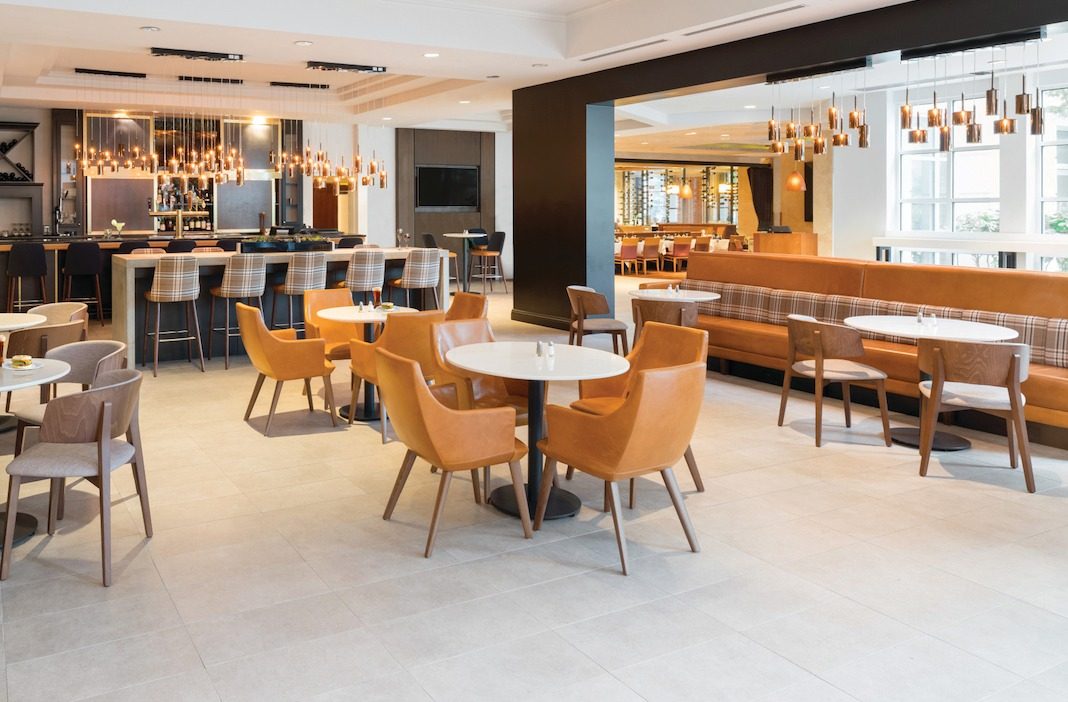Originally built in 1992, the Mystic Marriott Hotel & Spa recently underwent a major renovation. The lobby, guestrooms, and bar have been completely redesigned to reflect Mystic’s maritime history, and updates to the ballroom, meeting, and event space are due to finish this summer.
Designer DiLeonardo extensively researched the surrounding area and its past to create design elements true to Mystic and New England, as well as provide an air of timelessness in the updated spaces. Many of the new lighting fixtures, fabrics, and textures in the Mystic Marriott were created in New England and inspired by the designers’ deep dive into the surrounding area’s history. In fact, identifying the importance of the history, geography, and modernity of the area was absolutely essential to the renovation.
DiLeonardo also aimed to capture the social fabric of Mystic, as many travelers visit the area as an educational and learning destination due to its renowned seaport, aquarium, and coastline. Jennifer Skaife, design director for DiLeonardo, reinforces the importance of the company’s design process and says, “There’s a refinement and modernity to New England, as well as its deep history, and we felt it was important to speak to the present as much as the past.”
FEELS LIKE HOME
The plaid booths give the space a homey feel. “You’ll find a plaid blanket somewhere in most New England homes. The pattern adds a bit of whimsy but keeps it quite neutral. It’s a light- hearted, yet recognizable, moment,” Skaife notes.
LOCAL LOOK
Copper lighting brings warmth to the area and acts as art. “We were inspired by an artisanal craftsman look,” Skaife says. “We wanted something that looked hand-blown. There is a culture of artisans and artists throughout New England, and glass blowing has always been part of that.”
HIDDEN BAR
Connecticut law states that alcohol cannot be displayed during certain times of day. To comply with this law, Skaife says, “With Marriott’s ‘Great Room’ design philosophy, the bar is part of the lobby, so the whole experience is seamless and continuous. We removed shutters on the bar fronts and put the panel system on the back bar that closes off the liquor displays.”











